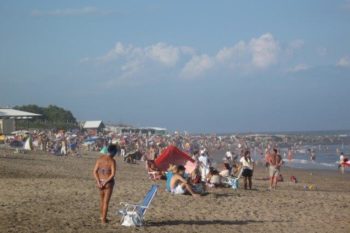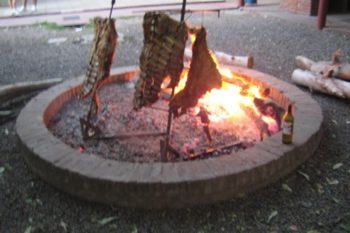A little girl on her mother’s lap can’t stop staring at the black woman sitting next to them on the bus. She’s mesmerized by the woman’s colourful clothing and dark skin tone. She’s never seen someone like this so close. Her mother apologizes. The black lady waves it off with a broad smile and offers the little girl a cookie.
*********
A gaggle of elderly women stands around a pram cooing over a chubby little baby. His mother beams with pride. They are the only African family (they came from Senegal) living in this suburban town and their arrival has caused a sensation.
*********
A black woman is trying to clear Immigrations in Buenos Aires. The immigration officer states that either her shiny new passport is false or she’s lying: she can definitely not be black and Argentinean. The lady is detained on suspicion of carrying a false passport. After six hours and a missed flight, the matter is cleared and apologies are offered. Too little, too late.
The black lady is a fifth generation Argentinean descendant of African slaves.
*********
When I was at school, we used to perform historical pageants to celebrate important dates in the history of our country, like Emancipation Day (May 25th.) The scene was more or less the same every year: a crowd gathered outside the Cabildo (government house) waiting to hear whether the revolutionary council broke ties with the Spanish Empire.
Some of us dressed as gentlemen and ladies sporting the fashions of 1810, gauchos, merchants, and candle and empanada sellers. The latter were usually African slaves.
Needless to say, there were no black children at my school. Or my town. Or anywhere else, for that matter. Like the little girl on the bus, I’d never seen a black person in my life. It didn’t occur to me at the time to wonder why there were Afro-Argentineans in the history textbooks but not on the streets.
According to the renowned Argentinean archaeologist Daniel Schávelzon, there is no easy or definite answer to that question. In his article “The Vanishing People: Archaeology of the African Population of Buenos Aires,” Schávelzon explains that the exact number of African slaves who entered the territory is unknown due to insufficient records. And since slave trade was affected by the country’s independence from Spain and British abolitionist activities, fewer slave shipments were made in the early 19th century.

One of the reasons Schávelzon proposes for the near disappearance of the African-Argentinean population is that hundreds of slaves joined the army –although some were forced to- in exchange for their freedom. A large percentage of those soldiers didn’t return from the Independence wars against Spain and the Triple Alliance war against Paraguay, which drastically reduced their numbers.
Schávelzon also explains that slaves in Buenos Aires were part of the urban population: they either lived with their masters or on their own, as some artisans were allowed to practice their craft. The latter lived in poverty and were frequently stricken by disease like cholera and yellow fever. A high mortality rate combined with a low birth rate and short life expectancy contributed to the depletion of the African-Argentinean population. The last blow, according to Schávelzon, was the great influx of European immigrants, at least a million at the turn of the 20th century alone, followed by more waves of immigrants from Eastern and Western Europe.
But are there still African-Argentineans around? The answer is yes, there are. It is estimated that two million descendants of African slaves live in Argentina. Some people will deny their existence or discriminate against them (as was the case of that lady at the airport), but they are definitely here.
Read more:
African American culture in the USA
Religious diversity in Argentina
Urban pilgrims in Buenos Aires




